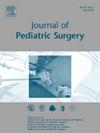Pancreatic resection operations in pediatric patients: A NSQIP-Pediatric analysis of outcomes and factors associated with adverse events
IF 2.5
2区 医学
Q1 PEDIATRICS
引用次数: 0
Abstract
Purpose
We aim to utilize a large national database to assess postoperative outcomes of pancreatic resection operations in children and the factors associated with early postoperative adverse events.
Methods
Children (age ≤18 years) undergoing pancreatectomy between 2012 and 2021 were identified using the National Surgical Quality Improvement Program-Pediatric database. Demographics, comorbidities, and outcomes were reported across operation types. Multivariable logistic regression was used to identify factors associated with postoperative adverse events within 30 days.
Results
Of 336 patients identified, 260 (77.4 %) underwent distal pancreatectomy, 54 (16.1 %) underwent enucleation, 12 (3.6 %) underwent total pancreatectomy with islet autotransplantation, 5 (1.5 %) underwent pancreatoduodenectomy, 3 (0.9 %) underwent total pancreatectomy, and 2 (0.6 %) underwent debridement. Indications for operation included pancreatic neoplasms/cysts (n = 134, 39.9 %), hypoglycemia (n = 95, 28.3 %), other pancreatic diagnoses (n = 59, 17.6 %), pancreatitis/pseudocysts (n = 36, 10.7 %), and trauma (n = 12, 3.6 %). Median length of stay was 7 days (IQR: 5–15). In the 30-day postoperative period, 27 (8 %) patients were readmitted, 20 (6 %) patients underwent reoperation, 85 (25.3 %) patients had complications, and there was one (0.3 %) mortality. Overall, 106 (31.5 %) patients had postoperative adverse events. Odds of any adverse event were independently higher in those with preoperative comorbidities (adjusted odds ratio (aOR): 2.51, 95 % confidence interval (CI): 1.39–4.57) and need for preoperative nutritional support (aOR: 3.94, 95 % CI: 1.88–8.54).
Conclusion
In pediatric patients undergoing pancreatectomy operations, preoperative comorbidities and need for nutritional support are independently associated with higher odds of adverse events. Multidisciplinary preoperative optimization should be considered in these high-risk groups.
Type of study
Retrospective cohort study.
Level of evidence
III.
儿童患者胰腺切除手术:nsqip -儿科结果和不良事件相关因素分析。
目的:我们的目的是利用一个大型的国家数据库来评估儿童胰腺切除手术的术后结果和与术后早期不良事件相关的因素。方法:2012-2021年间接受胰腺切除术的儿童(年龄≤18岁)使用国家外科质量改进计划-儿科数据库进行筛选。报告了不同手术类型的人口统计学、合并症和结果。采用多变量logistic回归确定与术后30天内不良事件相关的因素。结果:在336例患者中,260例(77.4%)行远端胰腺切除术,54例(16.1%)行去核,12例(3.6%)行全胰腺切除术并胰岛自体移植,5例(1.5%)行胰十二指肠切除术,3例(0.9%)行全胰腺切除术,2例(0.6%)行清创。手术指征包括胰腺肿瘤/囊肿(n=134, 39.9%)、低血糖(n=95, 28.3%)、其他胰腺诊断(n=59, 17.6%)、胰腺炎/假性囊肿(n=36, 10.7%)和创伤(n=12, 3.6%)。中位住院时间为7天(IQR: 5-15)。术后30天内再入院27例(8%),再手术20例(6%),并发症85例(25.3%),死亡1例(0.3%)。总体而言,106例(31.5%)患者出现术后不良事件。术前有合并症(调整优势比(aOR): 2.51, 95%可信区间(CI): 1.39-4.57)和术前需要营养支持(aOR: 3.94, 95% CI: 1.88-8.54)的患者出现任何不良事件的几率均较高。结论:在接受胰腺切除术的儿科患者中,术前合并症和对营养支持的需求与不良事件的高发生率独立相关。这些高危人群术前应考虑多学科优化。研究类型:回顾性队列研究证据等级:III。
本文章由计算机程序翻译,如有差异,请以英文原文为准。
求助全文
约1分钟内获得全文
求助全文
来源期刊
CiteScore
1.10
自引率
12.50%
发文量
569
审稿时长
38 days
期刊介绍:
The journal presents original contributions as well as a complete international abstracts section and other special departments to provide the most current source of information and references in pediatric surgery. The journal is based on the need to improve the surgical care of infants and children, not only through advances in physiology, pathology and surgical techniques, but also by attention to the unique emotional and physical needs of the young patient.

 求助内容:
求助内容: 应助结果提醒方式:
应助结果提醒方式:


